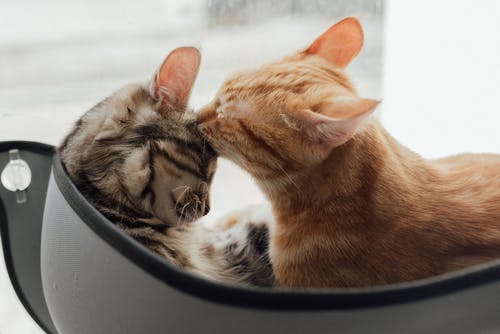Veterinary Ophthalmology: Eye Problems in Pets
Many eye diseases commonly impact pets and can cause tears, redness, and pain. Being aware of and identifying the root problem is essential for the health of your pet’s eyes because the cornea and other ocular tissues can be damaged if they are not treated immediately. Pets with wrinkles or flat faces should be observed frequently for tearing, squinting, or discomfort. They may be more vulnerable to developing eye problems.
Quick detection of any abnormalities will significantly lower the risk of developing more severe issues. But, many ophthalmic problems may happen at any time, meaning it’s not only elderly dogs that we should be concerned about regarding the factors leading to impaired vision or loss of sight. Also, all breeds of dogs are susceptible to the hereditary condition of blindness and other eye health issues.
To keep eye ailments from worsening, looking for signs of damage or pain in the eyes is crucial. It’s always recommended to bring any concerns to a veterinarian promptly since poor eye health and vision loss could be signs of underlying medical issues.
Eye Problems in Pets
Here are a few of the most frequent eye issues affecting pets, along with some advice on handling them. Of course, you’ll consider visiting a veterinary eye doctor if your pet’s eye health issues are severe.
Entropion
Entropion is the name of this ailment, which is more frequent in dogs than cats. The hair of the eyelids of pets rubs on the eye’s surface, resulting in discomfort in the eye, increased tear production, corneal ulcers, or scarring. Entropion is frequently a congenital condition commonly observed in dogs with much facial skin.
Crying for long periods and squinting can indicate entropion, often observed in puppies. Surgery can be done to correct the faulty eyelid anatomy by removing a tiny portion of the eyelid after the pet has finished growing. Look up “Veterinary dentistry in Seattle” for the best results.
Cherry Eye
Cherry eyes also referred to as prolapse of the third eyelid gland, are rare in cats but are relatively frequent for dogs and are particularly prevalent in certain breeds. The nictitating membrane, the third eyelid, which is present in dogs and cats and is located inside the lower lid, is one of these traits. The gland that produces most of the tear film protecting the eyes is located in the third eyelid.
This gland is usually hidden, but weakened ligaments can cause it to prolapse or be able to pop out and rest on the surface of the eye. Surgery is typically required to create a larger area where the gland could relax to stop the problem from reoccurring. Visit a vet website to learn about orthopedic conditions in pets.
Cataracts
Pets can also develop cataracts due to diabetes, aging, genetic illnesses, or other medical conditions. Cats suffering from advanced cataracts can be easily recognized because the ordinarily clear lens displays the appearance of a cloudy, opaque cataract.
Your pet may have difficulty being able to see if they have cataracts, particularly at night. Cataracts prevent sunlight from reaching the back part of the eyes. Cataracts can increase pressure in the eye without surgical removal, causing the condition known as glaucoma.
Conjunctivitis
The mucous membranes, also known as the conjunctiva, are found inside the eyelids of your pet’s pet, on two sides of your third eyelid, and in the eyeball tissue. Conjunctivitis can cause painful eye discharge, redness, and swelling.
Conjunctivitis can arise from physical irritability, infections, and allergic reactions. A saline eye flush or antibiotic eye medicines are a way to treat the inflammation depending on the underlying reason. Consult a specialist about surgical treatment of eye.








